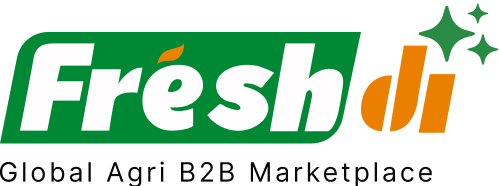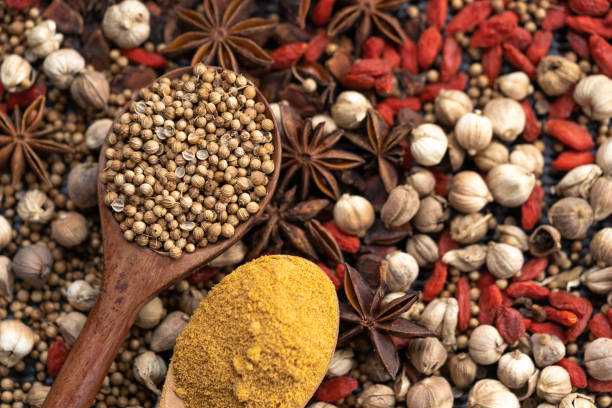Introduction – Canada’s Spices Market: A Quantitative Overview
Canada might not be the first country that comes to mind when you think of spices, but it’s quietly carving out a strong position on the global spices map. As of 2024, Canada’s spice market is showing steady growth in both production and consumption. With more international cuisines entering Canadian homes and health-conscious consumers turning to organic, all-natural herbs, the demand for quality spices is on a consistent rise.
If you’re a buyer looking to tap into the Canadian spices market, making decisions based on gut feeling won’t cut it anymore. Today, data-backed insights and supplier verification are essential. That’s where platforms like Freshdi come into play—offering verified supplier listings, RFQ trends, and performance metrics to support smart sourcing.
Let’s dive into the numbers and meet the top players shaping Canada’s spice export scene in Q3 of 2025.
Deep Dive – Key Production, Export Statistics & Market Signals
Canada’s spice industry is steady, both in terms of output and demand. According to ReportLinker, the country produced around 12,000 metric tons of spices, maintaining a consistent production level over recent years.
Spice Consumption Trends
Canadian spice consumption in 2024 was approximately 39,000 metric tons, and it’s forecasted to slightly increase to 39,080 metric tons by 2028. This slow but steady rise shows a stable and loyal domestic market.
Top Export Destinations
As per IndexBox.io, the United States absorbs 86% of Canada’s spice exports. Other notable destinations include Jamaica and Trinidad and Tobago.
Import Dependencies
Interestingly, Canada imports a large share of its spices from India, the United States, and China, which together supply 61% of its spice imports. This dual role as both an importer and exporter keeps the market diversified and dynamic.
Revenue Growth Forecast
The revenue in Canada’s spice segment is expected to hit USD 1.17 billion in 2025, with a projected annual growth rate of 6.09% from 2025 to 2030, according to Statista.
Consumer Preferences Shifting
There’s a noticeable tilt towards organic and all-natural spices, driven by health trends and the growing appeal of global cuisines. This shift is creating new opportunities for suppliers who can meet these preferences.
And how do we know all this? Buyers and importers are increasingly using platforms like Freshdi, not only to place RFQs but also to analyze trends, track supplier performance, and predict demand.
Top 9 Verified Spices Suppliers in Canada – Leading Exporters by Volume
Here are the top-performing, verified spice suppliers in Canada for Q3 2025. These suppliers were selected based on their export volume, certifications, buyer feedback on Freshdi, and market presence.
-
JMB
Specializes in high-quality green cardamom, with consistent export volumes and positive buyer reviews. Known for reliable delivery and competitive pricing. -
Thomas
Offers a wide range of culinary herbs and spices. Recognized for excellent customer service and HACCP-certified processes. -
Satori Foods Inc.
A leading player in the organic spice segment, especially popular for turmeric and cumin. Certified USDA Organic and Non-GMO. -
Vanilla Food Company
Based in Ontario, they focus on premium vanilla products but have expanded to include nutmeg, cloves, and cinnamon. -
McCormick Canada
A household name, this giant supplies both retail and bulk spices. Their export division is robust, with strong logistics backing. -
Crescent Brands Inc.
Known for blends and seasoning mixes. Their chili powder and spice blends are particularly popular in export markets. -
Kissan International Trading Inc.
Focuses on South Asian spice varieties. Well-reviewed on B2B platforms for authenticity and quality. -
Kanata Spice Ltd.
Their main product lines include paprika, black pepper, and curry powders. They’ve recently scaled their exports to the Caribbean. -
Atlas Trading Company
A trusted supplier of bulk spices to food processors and restaurants. They’re growing fast in the Middle Eastern spice niche.
Dynamic Ranking Note
Keep in mind that rankings like this can shift based on export volumes, buyer reviews, and seasonal market performance. Platforms such as Freshdi regularly update their “Suppliers of the Month/Quarter” based on real-time RFQ activity and buyer satisfaction. Always check for the latest insights before making a deal.
Market Navigation – Statistical Trends, Price Insights & Export Dynamics
Let’s talk numbers and trends. What’s hot in the Canadian spice market right now?
Most Sought-After Spices
Based on current buyer behavior and RFQs seen on Freshdi, the most requested spices in Canada include:
- Cumin
- Turmeric
- Black Pepper
- Cardamom
- Cinnamon
These spices align with the shift towards health-friendly and ethnic cuisine trends.
Seasonal Pricing Insights
Prices for spices don’t stay static. For example:
- Cardamom and cinnamon prices spike during the fall and winter due to holiday demand.
- Turmeric and cumin often see price increases in spring due to bulk buying by food processors.
Understanding these patterns can help buyers lock in better deals and plan ahead.
Historical Data as a Buying Strategy
Historical data from Freshdi can help predict when to buy and when to wait. For instance, bulk spice purchases made in Q2 often see 8–12% cost savings compared to Q4 buys due to reduced seasonal demand.
By using tools like Freshdi’s market dashboards, buyers can actually time their purchases like investors timing the stock market.
Conclusion – Leveraging Data for Optimized Supply Chains
Canada’s spice industry may not be the largest globally, but it’s strategically positioned, with consistent output, strong export ties, and a growing domestic market. For businesses looking to import from or export to Canada, the key lies in leveraging data.
Checklist for Buyers: How to Choose the Right Supplier
- ✅ Verify supplier certifications (e.g., HACCP, Organic, Non-GMO)
- ✅ Check export history and buyer reviews on Freshdi
- ✅ Analyze seasonal price trends before placing large orders
- ✅ Use RFQ tools to compare offers from multiple suppliers
- ✅ Look for suppliers offering traceability and ethical sourcing
Future Outlook
With a projected annual growth rate of over 6%, Canada’s spice market is only getting stronger. Expect to see more demand for organic, sustainable, and ethically sourced products. Suppliers who adapt to these trends will dominate the rankings in future quarters.
How Freshdi Empowers Buyers
By offering real-time RFQ data, supplier verification, and trade insights, Freshdi acts as your digital compass in the complex spice trade landscape. Whether you’re sourcing cumin in bulk or scouting for an organic cardamom supplier, Freshdi gives you the tools to make smarter, more profitable decisions.
References
- ReportLinker: Canada Spices Market
- IndexBox.io: Canada Spices Market Analysis
- Statista: Canada Spices Market Outlook
FAQs
1. Who is the biggest spice exporter in Canada?
While multinational giants like McCormick have a strong presence, smaller verified suppliers like JMB and Thomas are rising in export volumes, especially in Q3 of 2025.
2. What are the most exported spices from Canada?
Black pepper, cardamom, cumin, and cinnamon are among the top exported spices, especially to the U.S. and Caribbean markets.
3. How can I verify a Canadian spice supplier?
Use platforms like Freshdi to check supplier certifications, export history, and buyer reviews.
4. When is the best time to buy spices in bulk in Canada?
Q2 is often the best time due to lower seasonal demand, offering better pricing and availability.
5. Are organic spices gaining popularity in Canada?
Absolutely. There’s a clear trend toward organic and all-natural spices, driven by health-conscious consumers and demand for clean-label products.


